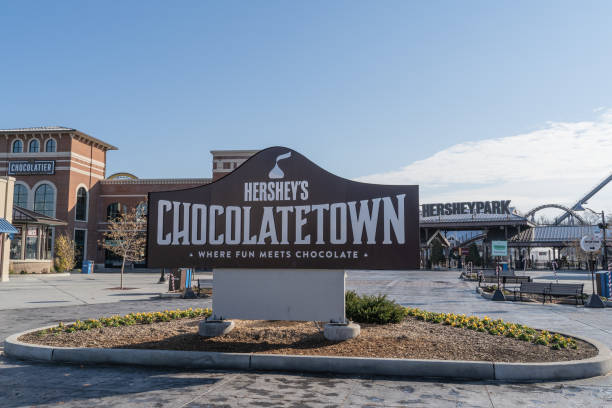“The greatest test of courage is to bear defeat without losing heart.” Robert Ingersoll
1886 – New York City: After Milton Hershey’s small candy business failed, a colleague told him, “Milton, let’s face it. This isn’t your first failure; maybe you’re not cut out to be a businessman. And maybe you should go back to the farm in Pennsylvania.” Hershey didn’t want to listen to the advice, but, although he hated to admit it, the colleague might be right.
A decade earlier, after a four-year apprenticeship to a candy maker in Hershey’s hometown of Lancaster, Pennsylvania, the 23-year-old moved to Philadelphia and started his first candy business. Despite his hard work, the company ultimately failed and went into bankruptcy after six challenging years.
After the Philadelphia business failure, Hershey followed his father to Denver, where his father hoped to strike it rich mining for silver. Hershey worked as the local confectioner. Although he learned a technique to improve caramel by using fresh milk in the recipe, his business didn’t last. Along the way, he also had another failed attempt in Chicago. Three botched business attempts.
The candy business in New York was his fourth to fail. Hershey took his friend’s advice and moved back to Lancaster, but not to the farm. He had an idea. He made darn good caramel. In 1886, a few months after returning from New York, he started the Lancaster Caramel Company.
This time, Hershey relied on the experience that he had gained in his previous business ventures. His new caramel recipe made with fresh milk was popular with customers. His business grew quickly. Orders came in faster than the candy maker could fill them, and he increased the size of his operation. Three years later, he had built a $1 million-a-year business. After a lot of ups and downs, Milton Hershey had finally created a successful business.
In 1893, Hershey took the train to the World’s Fair in Chicago. While there, he was fascinated with the J. H. Lehmann Company exhibit. Lehmann, a German manufacturer of chocolate-making machinery, was demonstrating a small chocolate candy operation. Hershey stood there for several hours, taking notes and asking questions. Most of those who saw the exhibit that week observed a chocolate candy process. Hershey saw the future: affordable chocolate candy.
At the time, chocolate was expensive, a luxury only the rich could afford. Hershey would find a way to make chocolate that ordinary people could buy. After the fair, he bought the Lehmann equipment on the spot and shipped it back to Lancaster.
Over the objection of his board of directors, and the advice of close friends who thought he was crazy, Hershey sold his successful caramel business. Selling the company made no sense to them. After all, he had finally built a profitable company. Why sell it? Hershey sold the caramel operation and used the revenue to develop an affordable chocolate.
He introduced fresh milk, sugar, and other changes to the cacao. It took numerous trials over several years before he found the right chocolate. In 1900, the Hershey Company introduced the Hershey Bar. It cost a nickel and was wildly popular.
The business expanded rapidly. Hershey built an entire town, Hershey, Pennsylvania, around his chocolate manufacturing plant, complete with a school, retail stores, a pharmacy, and a medical clinic. In 1907, at the age of 50, Hershey debuted Hershey’s Kisses: small, individually wrapped and perfect for mass production. A small bag costs five cents.
In 1909, Milton and his wife, Catherine, who were unable to have children, founded the Milton Hershey School for orphaned boys. Hershey endowed it with $60 million and controlling shares of stock in the Hershey Company. The school began with 4 students.
Today, the vocational school serves 2,100 girls and boys in grades Pre-K through 12th grade. They come from underprivileged backgrounds across the United States. Students live on campus in dormitories and take a variety of vocational courses as well as college-preparatory classes. The school’s endowment has grown to $17 billion today.
Today, the Hershey Company remains a major player in the global candy business. Key brands include Kit Kat, Hershey Bars, Hershey Kisses, and Reese’s Peanut Butter Cups, among others, with sales in 90 countries. Sales in 2024 exceeded $11 billion.
After numerous business attempts, Milton Hershey, over the objections of colleagues and friends, built a global candy empire and then gave most of it away to children who desperately needed a helping hand. Hershey left a sweet legacy on both accounts.
